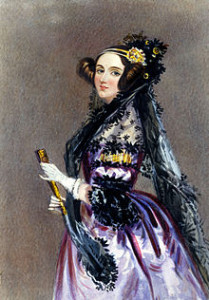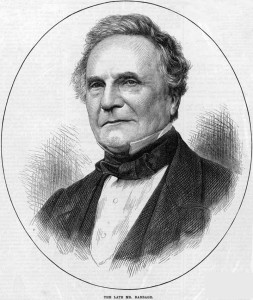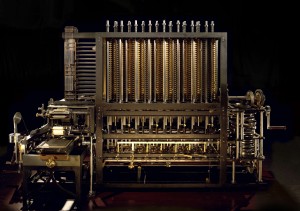 The design for the new British passport has come in for lots of criticism. Most of this has centred on the fact that its pages feature seven men, but just two women. The nine featured people include a few familiar faces such as Shakespeare and Constable, but also some less well known creative geniuses. And amongst these are the remarkable but little known Charles Babbage and Ada Lovelace. Between them they invented the idea of the computer- one hundred years before the much better known Alan Turing started to put their ideas into practice.
The design for the new British passport has come in for lots of criticism. Most of this has centred on the fact that its pages feature seven men, but just two women. The nine featured people include a few familiar faces such as Shakespeare and Constable, but also some less well known creative geniuses. And amongst these are the remarkable but little known Charles Babbage and Ada Lovelace. Between them they invented the idea of the computer- one hundred years before the much better known Alan Turing started to put their ideas into practice.
Babbage was born in 1791, the son of a wealthy banker. He showed an early interest in Mathematics, and found that when he studied the subject at Cambridge University, he knew much more than his tutors. Not surprisingly, he enjoyed a fine career as a Mathematician, was elected a Fellow of the Royal Society at the age of 27, and was for many years Professor of Mathematics at Cambridge.
Babbage was much more than a Mathematician. He wrote books on Philosophy, Religion, Science, Economics and Politics. He was also a prolific inventor and interested in codes and codebreaking.
 But his real love was statistics and producing absolutely accurate mathematical tables. Whenever a human being does a difficult mathematical calculation, sooner or later a mistake will creep in. So Babbage came up with the idea of a machine that would perform the most complex of mathematical calculations with complete accuracy. The government was interested and gave him a grant of £17,500 for the project. This was a huge grant, equivalent to Millions of pounds today.
But his real love was statistics and producing absolutely accurate mathematical tables. Whenever a human being does a difficult mathematical calculation, sooner or later a mistake will creep in. So Babbage came up with the idea of a machine that would perform the most complex of mathematical calculations with complete accuracy. The government was interested and gave him a grant of £17,500 for the project. This was a huge grant, equivalent to Millions of pounds today.
Babbage worked on his machines for more than 30 years. The first design he called the Difference Engine, but he then worked on a much more powerful Analytical Engine which could perform any mathematical task given it- in other words it could be programmed, like a modern computer.
Neither machine was ever completed. The government, annoyed at pouring good money after bad, stopped the funding and Babbage was forced to abandon the whole plan. What went wrong?
Babbage was limited by the technology of the time. He had no electricity or silicon chips. It would be a huge machine operated by gears and wheels. His first design demanded 25,000 different parts. Babbage required the highest quality machine tooled parts made of expensive metals. He seems to have been a very difficult man to work for, and some of his best engineers walked out when he blamed them for lack of progress.

It was at this point that Ada Lovelace enters the story. Born in 1815, she was the daughter of the famous poet Lord Byron. It was her mother who encouraged her to take up Mathematics rather than the poetry of her father. Like Babbage, she was a brilliant Mathematician, although being a woman she could never go to University. She worked with Babbage on his machines for 10 years. Her most important contribution was a paper she wrote in the 1840s. Although well received at the time, it was soon forgotten as the machine was never built. It was only when the paper was re-published in 1953 that its importance was recognised.
In the paper, Lovelace predicted that a machine like Babbage’s could be used for far more than doing mathematical calculations. A machine could be created, for example, to compose music. In short she realised that fully programmable machines could be built. This was an astonishing prophecy, and far more ambitious than anything Babbage himself suggested.
Lovelace died young aged 36. Babbage had a long life, but was always blamed the government for the failure to build his machine.
The Science Museum decided to complete his project. In 1991 (exactly 200 years after his birth) they built a Difference Engine to his design, using only the materials that were available in his time. It is a monster of a machine with 4,000 parts, two metres high, more than 3 metres wide and weighing 3 tons. Ten years later the Museum added his device for printing out the results. That weighed in at another two tons.
And it works perfectly. It can be programmed to do any mathematical calculation which is then neatly printed out. So the computer- or at least the calculator- could have been built 150 years ago.
Babbage and Lovelace’s pioneering work on computers deserve to be better known. So, despite all the controversy about the new passport, I am pleased that they have got their long overdue recognition.








